Choosing Slotted, Unslotted & Types of Basin Waste

When it comes to finding the perfect complementary brassware for your classy new bathroom sink, basin wastes are often an afterthought.
When it does come to shopping around for one, there are inevitably a few common questions that arise about the types available, most prominently the jargon around slotted or unslotted wastes, as well as the function of different models. While some manufacturers save you some hassle by supplying a basin waste alongside their taps or basins, in the event that you do need to shop around or find a replacement it is good to know these differences. This can eliminate pain points or worse, plumbing issues, in your bathroom down the line. In this article, we will break down:
- What is A Basin Waste and What Do They Do?
- Types of Basin Waste & Plugs
- What is an Overflow and Which Waste Should I Choose With or Without One?
- Slotted or Unslotted Basin Wastes: Which Do I Need?
- What Happens if you Buy the Wrong Type Waste?
- Where To Start Shopping for Basin Wastes
What is A Basin Waste and What Do They Do?
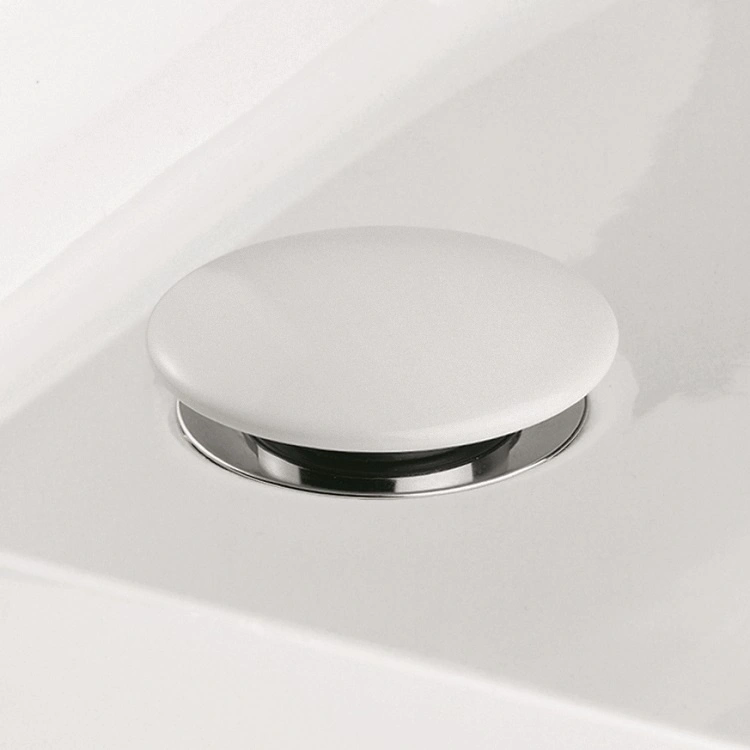
A basin waste is a metallic item that fits into the hole of the basin where the water drains from, connecting to the pipework below. It has the common purpose of helping a user to fill and empty the basin with water for use for daily hygiene uses, such as face-washing, applying make-up and shaving.
Alongside this, its main plumbing function is to prevent water from escaping underneath the basin and across your bathroom floor, while complementing the colour and design of the brassware it is being paired with.
It is worth noting at this point that bathroom basin and sink wastes can differ in size from their kitchen sink equivalents, so it is always worth checking ahead of purchase that you are getting the right one for your bathroom.
Types of Basin Waste & Plugs
When it comes to the types of basin wastes and plugs available, there are five primary types depending on their design and function, not to mention the style you are seeking. It is important to note that some have many different names depending on where you are in the world and which manufacturer you are buying from.
Click Clack Basin Wastes
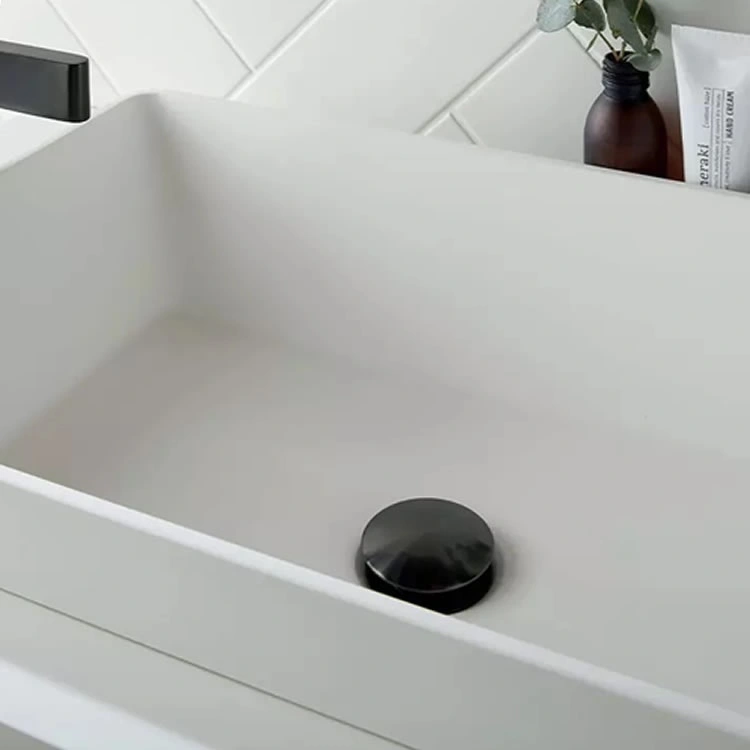
Click clack basin wastes have spring loaded centres that are pushed down to close the hole, such that you can fill your basin with water. Pushing it again then reopens the hole and allows your basin water to drain away. They also come by several other names, including push button wastes and spring (or sprung) basin wastes. The name comes from the satisfying ‘click clack’ noise it makes when being pushed to close or open. They are hugely popular, one of the most common types of modern basin waste, and are available in slotted, unslotted or even universal variants, which we will cover later in this piece.
The main benefit of click clack basin wastes is that they are one of the most reliable and easy to look after types compared to the others available. The downside is that to empty water out, it involves getting your hand wet while pressing the button. It is a minor inconvenience, though it is one that many people simply overlook or don’t mind.
Flip Top Basin Wastes
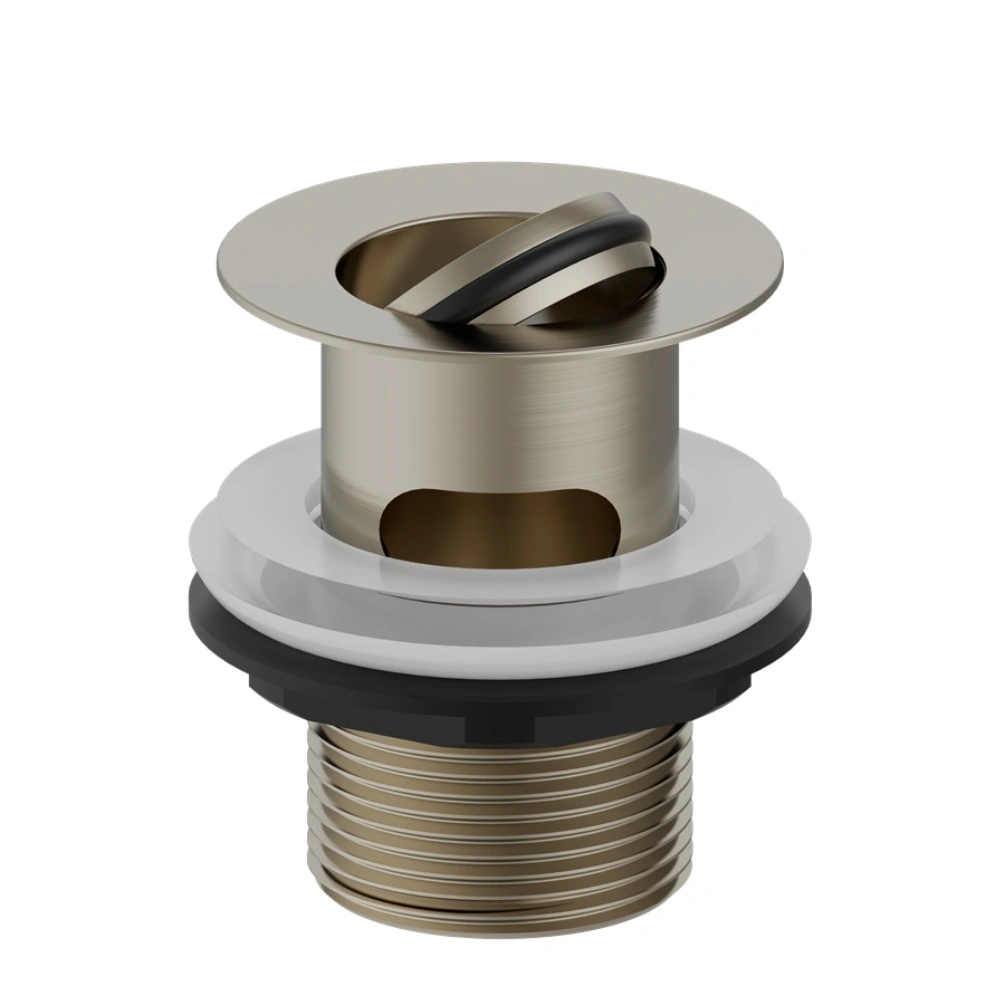
Flip Top Basin Wastes have a central disc that opens and closes like their click clack counterparts. However, instead of pushing down to open or close, one side is pushed to flip the plug vertically on a hinge, much like a coin standing on its side. This allows the water to flow out, while pushing it down on the other side closes it up to fill the sink again.
This makes it just as easy as click clack wastes to operate and in practical terms there’s no major advantage in this sense over one or the other. However, it is worth noting that it can require extra care to help prevent dirt and grime blocking it or stopping the flip function from working.
Plug and Chain Wastes
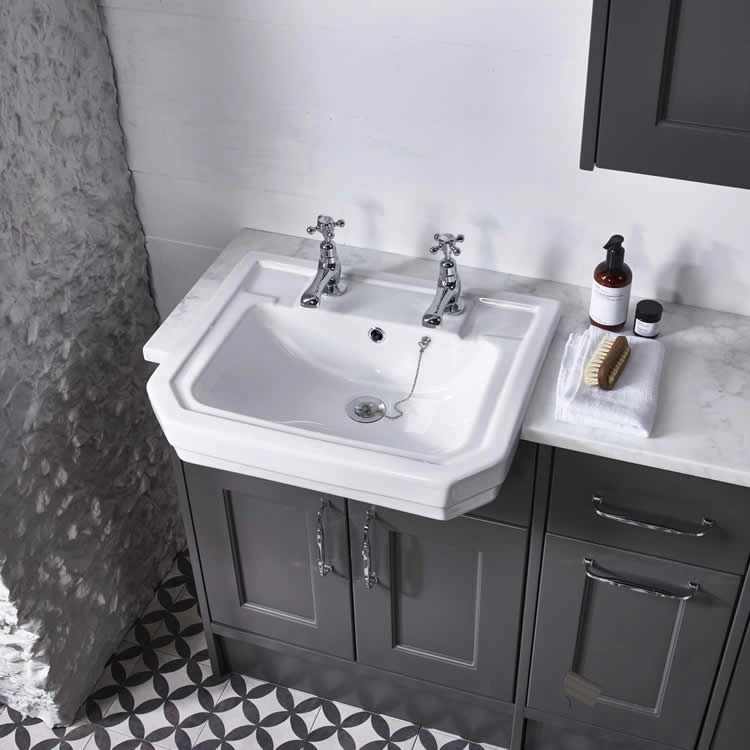
Perhaps the style of basin waste that most people will be familiar with, plug and chain wastes feature a metallic beaded or link chain with a plug on one end and a metal bar called a ‘stay’ that is fixed to the sink at the other. The plug can be pushed into the drain hole and pulled out using the chain to allow the water to drain. The chain component is fixed using the stay into a small hole, usually alongside or part of the basin overflow. In a lot of traditional basins, the overflow is designed with three small holes, or an overflow with a separate hole at the side.
If a basin doesn’t have this hole, it is probably not suitable for this type of waste since you don’t want to damage the basin or ceramic by attempting to drill a hole in, which can be off putting for some consumers as it inevitably limits your choice of basin. However, the plug itself can come in many different colours and materials with an additional decorative touch that many people enjoy.
Pop-up Wastes
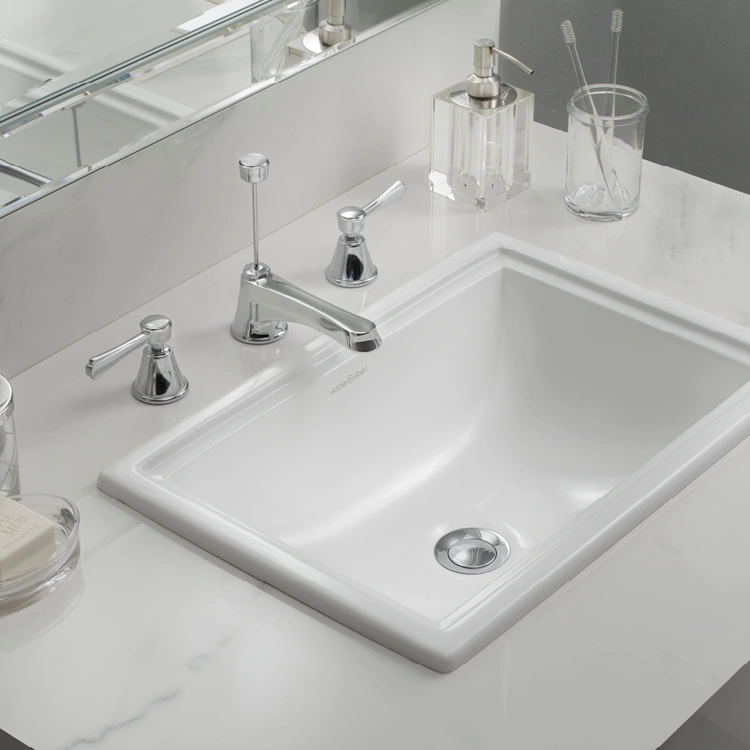
A pop-up waste is a lever-controlled waste using a metal rod that is fitted around the tap that can be pulled to drop the disc into close the waste for filling. Pushing the rod back in lifts the plug back up again to release the water. Rods can be attached to the tap in different locations including top (as pictured), side or even discreetly behind the tap.
This type of waste has the benefit – compared to all the others – of not needing to get hands wet to operate the plug. The downside of such a waste is that over time the rod can wear and break, which may mean replacing the tap.
This may provide a confusion point when it comes to shopping for wastes, or buying bathroom taps that come with such a waste, as many people assume this is a click clack waste when in fact this may not be the case. It is always worth confirming this ahead of purchase to make sure it is definitely what is wanted. As a more European-type waste, they aren’t as popular as others in the UK, especially since they are generally not bought standalone either.
Freeflow Wastes
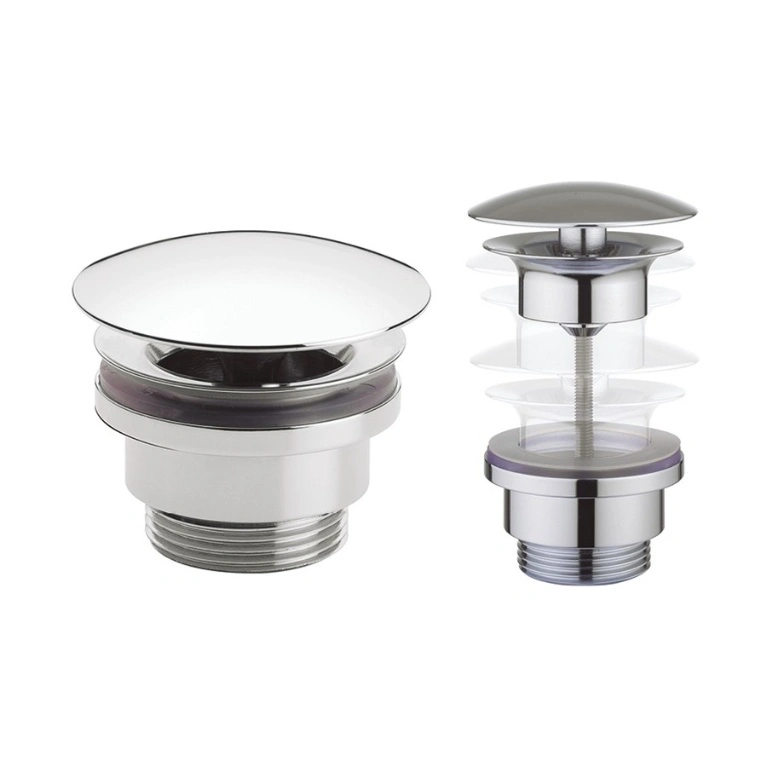
Freeflow wastes look similar to click clack wastes, but they do not push down, staying permanently open. This means they are perfect for those sinks without overflows to prevent any accidental over-filling or flooding, although not ideal if you want the sink to use for shaving or daily routines. As such, they are only really used in small bathrooms where they aren’t necessarily used for anything more handwashing in cloakroom basins, or locations where taps are likely to be left on such as in commercial bathrooms.
What is an Overflow and Which Waste Should I Choose With or Without One?
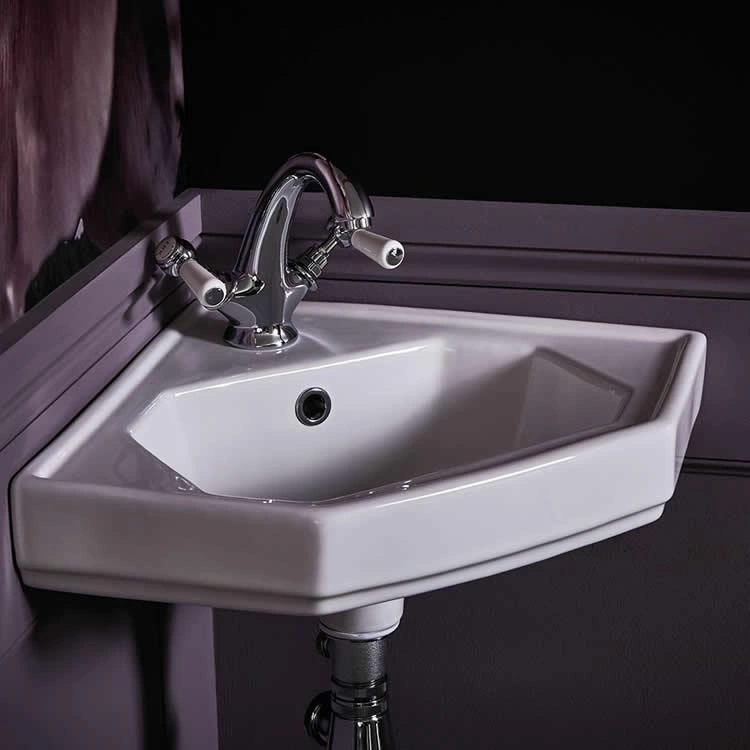
When considering which waste to purchase, not only does the style of the basin come into consideration, but also the design itself.
One area to think about ahead of your purchase is whether the bathroom sink you are looking at has an overflow hole or not. If you have ever looked at a sink and wondered about the purpose of the hole, usually positioned half-way up the back of sink bowl, then the answer lies in what type of waste is fitted and how it connects to the plumbing.
This hole is called an overflow and is a safety feature designed to prevent the basin from overfilling and flooding your bathroom. The idea is that when the water reaches this point, the water escapes through the overflow and back through the basin into the waste, and subsequently drains away via the plumbing.
The functional design and opening of the waste does not really matter in practice, so whether it is click clack, flip top or one of the others is largely a preferential choice. Where it does matter is if the waste itself has a hole in or not to help the water escape down the drain. If this isn’t the case, the water will merely accumulate in the hole and back through the overflow into the sink, basically making the overflow redundant.
Not all basins have an overflow – a lot of countertop basins do not have an overflow - and it isn’t a necessity to have a basin with one. However, they are quite common in a lot of bathroom sinks.
If you do not like the look of the normal overflow, an overflow cover can be added which adds a decorative and coloured touch to the sink can be matched to that of your brassware.
Slotted or Unslotted Basin Wastes: Which Do I Need?
With this in mind, if you have a basin with an overflow then a waste with a hole is required to help water escape when it goes through the overflow. If your basin does not feature an overflow, then a waste without a hole is required. As such, basin wastes fall into two types: slotted basin wastes and unslotted basin wastes.
What is a Slotted Waste?
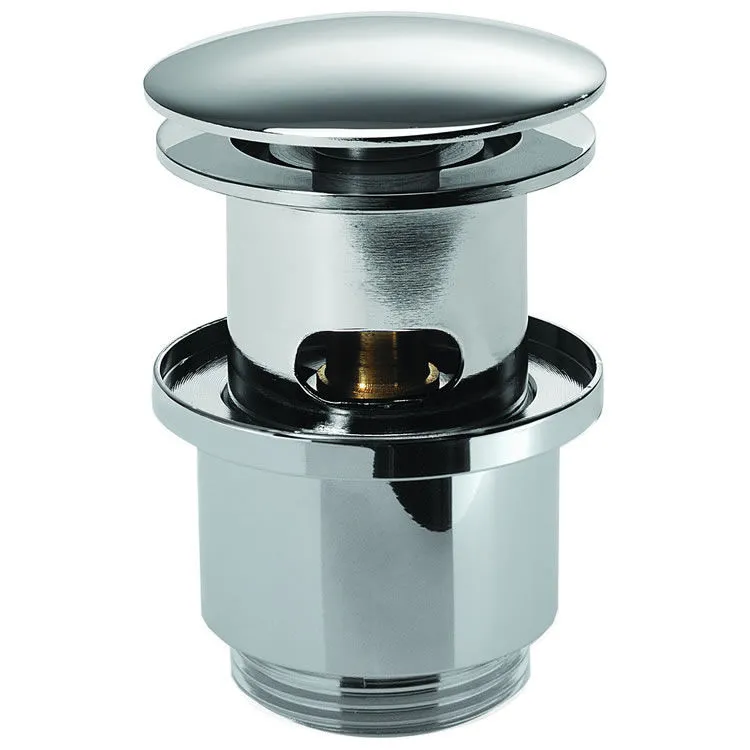
A slotted basin waste is one with a hole (called a slot) that is designed into the waste itself. When water goes through the overflow hole, it drains back into the waste through the slot, which then allows it to escape into the drain. Pairing a basin with an overflow with a basin waste without this slot could lead to a flooded bathroom.
What is an Unslotted Waste?
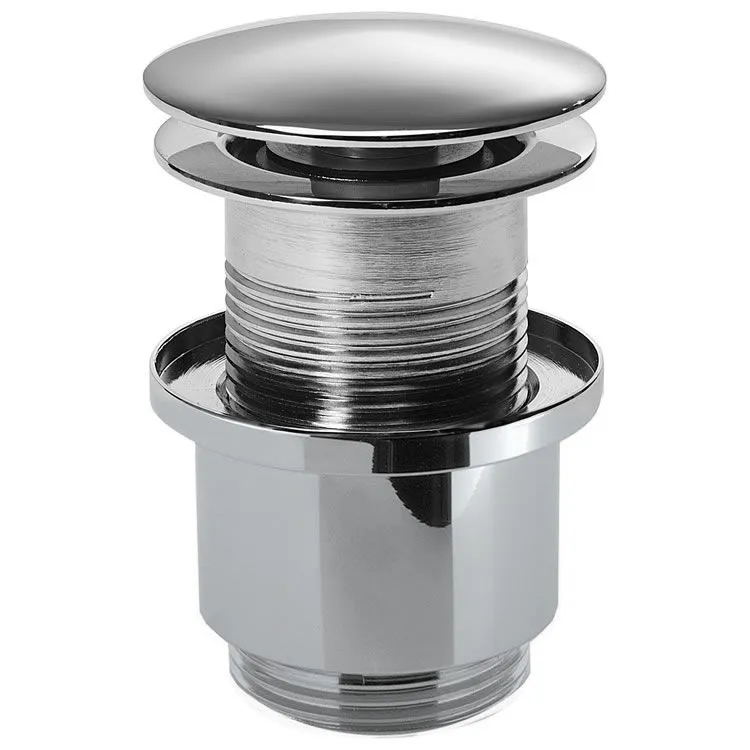
An unslotted waste features no such hole and so is only used with basins with no overflow. As such, the water only drains through the normal waste itself when it is open.
What are Universal Basin Wastes?
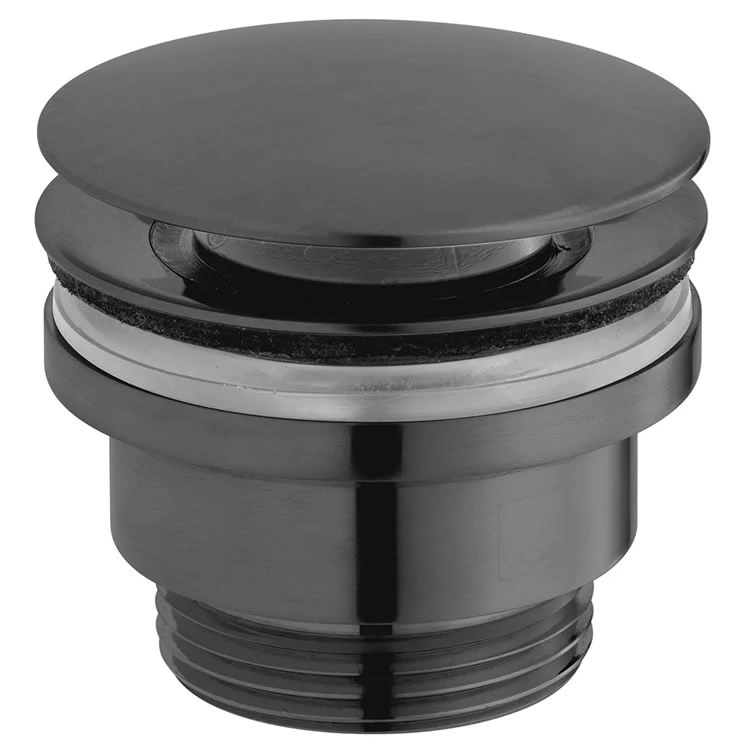
Universal Basin wastes are compatible with all basins, regardless of overflow or not. They can be converted into click clack basin wastes for those with overflows, or the top can be swapped to a freeflow waste mechanism that cannot be closed for those without overflows.
What Happens if you Buy the Wrong Type Waste?
If you buy the wrong type of waste, then this could cause water damage to your bathroom or may not work at all. If you install an unslotted wastes into a basin with overflow holes, the effect of the water on the waste itself could lead to degrading over time and would likely lead to slow leaks, from the outside edge of the waste as well as overfilling water back into the sink itself. Some wastes and basins are not compatible and cannot be adequately tightened to facilitate their function. As such, the easiest solution is simply to replace it with the correct type to match the basin.
Where To Start Shopping for Basin Wastes
Take a look at our wide selection of new basin wastes here, which are available in all the types we have mentioned above and in a choice of different colours to suit your brassware or to flaunt your individual style. Don’t forget to check out bottle traps and overflow covers to complement the rest of your bathroom brassware too.